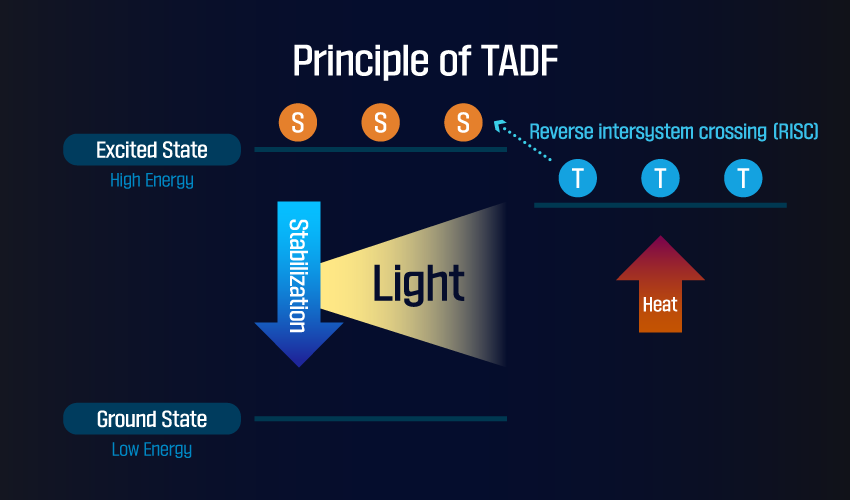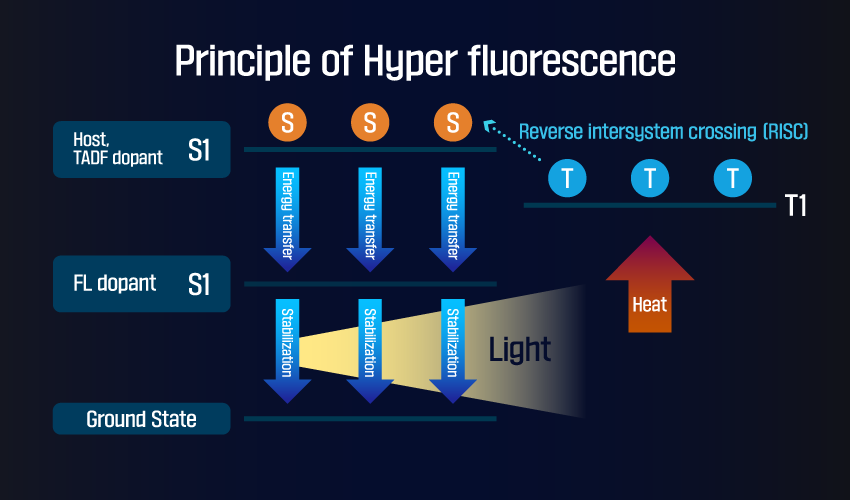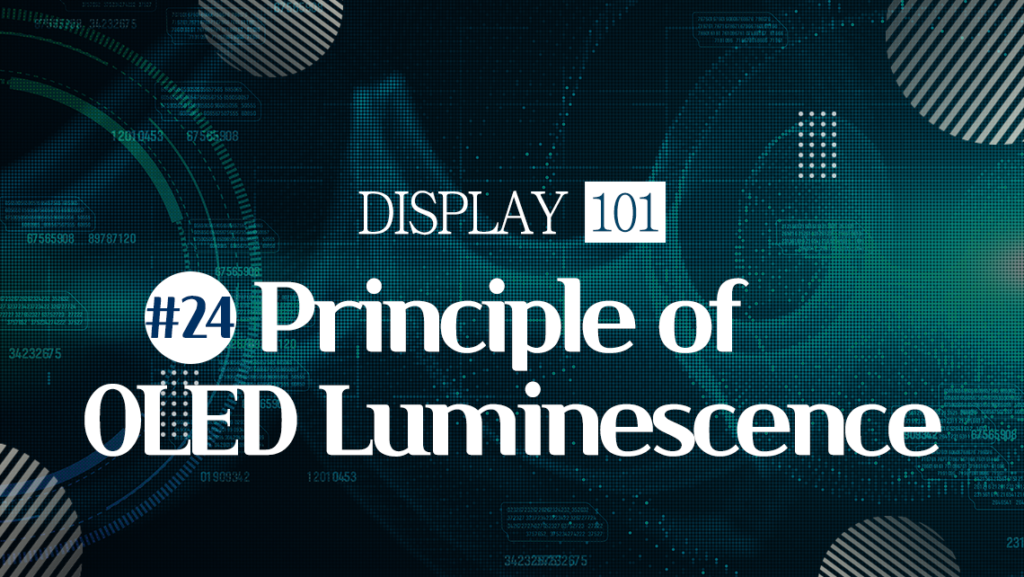DISPLAY 101
#27 TADF & Hyper Fluorescence

| TADF(Thermally Activated Delayed Fluorescence): Mechanism that moves triplet excitons that are lost in fluorescence to a singlet exciton, improving the internal quantum efficiency to 100%. Hyper fluorescence: Mechanism that combines TADF as an assistant dopant and fluorescence as an emitter to achieve light emissions of 100%. |
Stunning picture quality, vivid and lush color, and deep black are some of the plethora of benefits that OLED offers. Just as diverse as their allure are the various methods through which OLEDs can emit light. Going one step further from our recent Display 101 where we learned about fluorescence and phosphorescence, we’ll explore TADF and Hyper fluorescence, two next-generation luminance methods for OLEDs that offer more cost-efficiency, color purity, and a longer lifespan.
Two methods that enhance the efficiency of fluorescence
TADF and Hyper fluorescence share a common ground in that they are based on fluorescence. Before delving into the intricacies of TADF and Hyper fluorescence, let’s briefly revisit fluorescence for a better understanding. In fluorescence, electrons in an unstable ‘excited state’ return to a low energy level ‘ground state’ while emitting light. However, due to the limitation that only one state among a total of four spin multiplicities produces fluorescence, its efficiency is capped at 25%. TADF and Hyper fluorescence were developed specifically to maximize this efficiency to its maximum, at 100%.

TADF has a self-explanatory name that makes its principle easy to grasp. It involves artificially inducing a process known as ‘reverse intersystem crossing (RISC),’ where heat is applied to three triplet excitons (T) that are unutilized in fluorescence to a singlet exciton level (S) to induce fluorescence. In short, TADF uses heat to convert triplet excitons into a singlet state to push the internal quantum efficiency up to 100%, at the cost of delayed luminescence.

What about Hyper fluorescence? It is similarly based on TADF with a twist. While Hyper fluorescence undergoes the same reverse intersystem crossing process to transform the triplet excitons into a singlet exciton, it uses three additional materials that include a host, a TADF dopant, and a fluorescent dopant, which transfer energy to the OLED emitting materials. This combination allows the structure to utilize 100% of the internal quantum efficiency by transferring the energy lost in the T1 level to the S1 level using the reverse intersystem crossing process.









